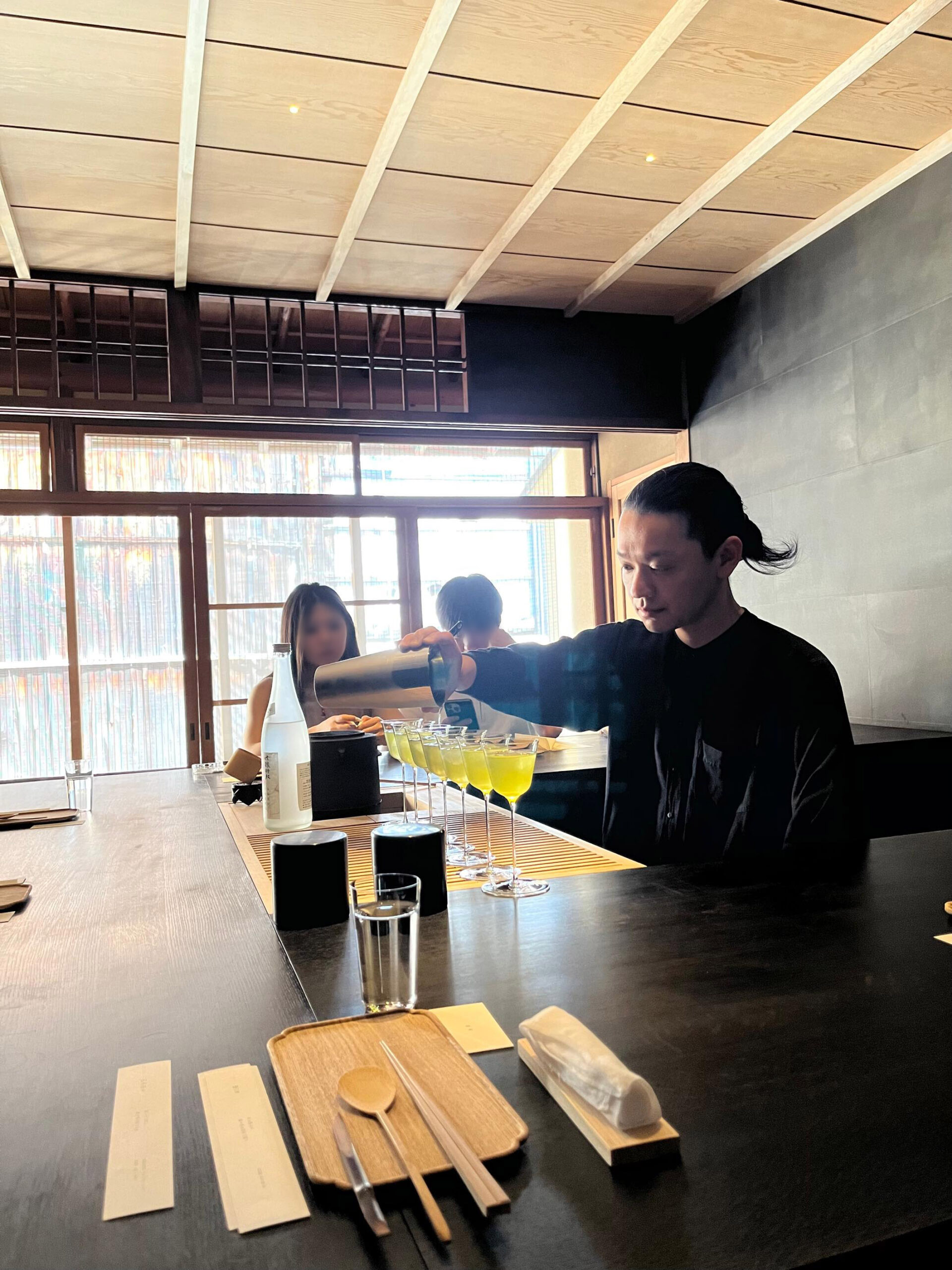Copyright GK Dynamics Inc., All Rights Reserved.

Copyright GK Dynamics Inc., All Rights Reserved.



During Golden Week holidays this spring, I took the opportunity of visiting my parents’ home in Kyoto to experience the so-called Chaka Kaiseki ceremony. It’s a unique Japanese culinary style that offers five pairs of sweets and drinks. Each sweet was skillfully created by Japanese sweets artisans trying to merge tradition and innovation. And the drinks, which included a glass of Japanese tea, sake, and cocktail, were made from carefully chosen tea leaves.
When I walked into a room designed to accommodate seven guests in a backwards C shape, I found a set of Japanese sweets cutter, spoon, and menu in the shape of folding screen beautifully laid out at each seat. Before long, the host showed up at the center of the room and started to explain the tea ceremony in a gentle voice. The ceremony was supposed to be performed by this master alone, who served five different types of tea beverage along with different types of confectionery.
After I went through everything about the ceremony, the first thing that came to my mind was the feeling that I had a truly memorable experience. I was able to enjoy delicate flavors of sweets and drinks as I had expected. What struck me, however, was the fact that the value of the whole experience outweighed the pleasure of eating and drinking.
Such feelings can be explained by various factors: a short poem added to the list of sweets and drinks that describes the inspiration of the confectionery producer; the ceremony master’s lean way of handling the tea utensils; the finely tuned rules of pouring every drop of tea; and the gentle yet tense atmosphere produced by these procedures. I came to realize that all these things worked together to produce a holistic world of multiple elements.
Either tangible or intangible things alone cannot work well. I was reminded that what really matters is an effort to create an overall picture of the world from the ground up
Satoru Nagai
CMFG Design Dept.
Design Director